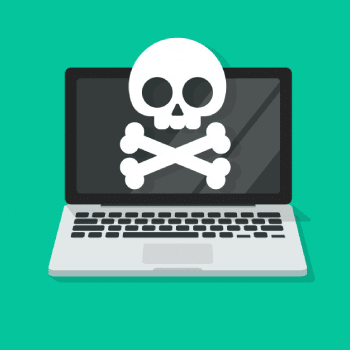Malicious Defacement
What does malicious defacement mean? At a basic level, "malicious defacement" means "the unauthorized alteration of existing content on your website." As hacker attacks go, malicious defacement may sound fairly harmless and, to be fair, it can be. It can, however, also be very dangerous.
What does malicious defacement mean for your business?
Perhaps a more pertinent question would be "What does malicious defacement mean for your business?". As a minimum, it's going to mean some level of disruption, even if that's "just" the IT team having to take time out of their day to do a clean-up job, an investigation, and a "learn-and-prevent" they probably feel they didn't need.
Malicious defacement can also mean that your company has been targeted for a more serious attack and the defacement is being used as a diversionary tactic. Even if it doesn't, the fact that your website has been very publicly breached creates a lot of potential for reputational damage.
In short, even the milder forms of malicious defacement need to be taken seriously. The good news is that preventing them depends more on robust processes than on expensive software tools. Here is a quick guide to the key steps you need to take to protect your website.

Choose a host for the right reasons
When choosing a host, the metrics to look at include security, uptime, page-load time, customer service response time/SLAs, and technical support response time/SLAs. Only if you are happy with all of this should you move on to consider the price. Even then, you need to keep in mind that higher-priced hosting packages can actually deliver better value. For example, if you have limited in-house IT resources then it may make a lot of sense to pay extra for a package that has your host take care of your server management.
Take your choice of software seriously
Stop and think about which content management system is right for your situation. It may indeed turn out to be WordPress but take that decision mindfully after you've looked at the other options.
Take the same approach to choosing your third-party extensions. Work out what functionality you need (or really want) and then work out which third-party extensions you need to make that happen. Do your research thoroughly and, if at all possible, test them thoroughly before deploying them in production.
Commit to keeping all of your software updated (this includes the software you use on your server as well as the software you use for your website) and to reviewing it periodically to ensure that it is still suitable for your purposes.
Learn how to get the most out of your software
When thinking about how to get the most out of your software, remember to think in terms of security as well as in terms of functionality. In particular, you need to familiarize yourself with all the default settings (or at least the main ones) and how to change them, plus you need to learn how to set access permissions appropriately. This last point is particularly important if you're on a shared server.
Invest in anti-malware products
You need a website vulnerability scanner for your website itself, plus robust anti-malware products with integrated firewalls for the server on which it is hosted and the computers and mobile devices you use to connect to it.
Different website vulnerability scanners will have different functionality. It's therefore strongly recommended to do thorough research on your options before you part with your cash. In particular, you need to make sure that a potential website vulnerability scanner has a robust anti-malware solution and a decent website applications firewall as these will form the core of your protection.
The good news is that you can get some excellent products at prices even SMBs can comfortably afford.
Manage and monitor your users
You need to manage and monitor all your users, external and internal. Harsh as it may sound, you need to assume that every visitor to your website is a potential hacker. Think about what they can do on your website, what risks it brings, and what steps you can take to bake security into the website itself to mitigate these risks.
Likewise, you need to assume that every internal account is also a potential attack vector. Administrator accounts are a particular vulnerability. You absolutely must keep these to a minimum and carefully vet the people to whom they are given.
Each administrator must have their own set of credentials and should be mandated to use a strong and unique password. If at all possible, this should be supported by the use of two-factor authentication. Contact our technical experts to know what does malicious mean.
Please click here now to have your website scanned, for free, by cWatch from Comodo.





